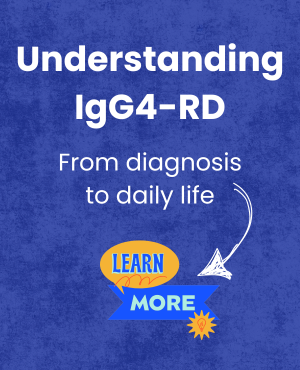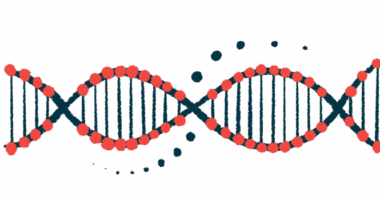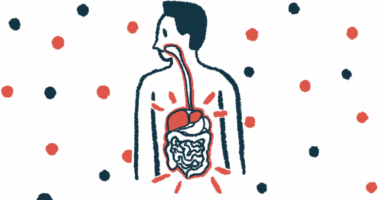Chest CT important for monitoring lung involvement in IgG4-RD: Study
Researchers: Clinical, biochemical and biopsy still needed for diagnosis

Lung abnormalities associated with immunoglobulin G4-related disease (IgG4-RD) can show up in a number of ways on a chest CT scan and certain abnormalities increase the likelihood of lung problems as first symptoms, a study shows.
These findings emphasize the importance of performing a chest CT when a person is seen at a clinic with other possible clinical or laboratory signs of IgG4-RD, said the study’s researchers, who noted that people with signs of lung involvement should be closely monitored for disease elsewhere.
“Chest CT is of great significance for the diagnosis and follow-up of [IgG4-related lung disease],” the researchers wrote. The study, “CT Chest findings in IgG4-related disease,” was published in Annals of Medicine.
IgG4-RD is a rare disorder wherein certain immune cells, including ones that secrete a type of antibody called IgG4, infiltrate tissues to cause inflammation, scarring, and the formation of tumor-like masses or swellings. Left without appropriate treatment, organ damage can ensue.
IgG4-RD can affect just about any tissue, leading to a variety of signs and symptoms. When the lungs are involved, these may include cough, shortness of breath, or chest pain when inhaling.
Chest CT scans are important for monitoring lung manifestations of IgG4-RD and to help doctors understand where and to what extent damage is occurring, to rule out other lung diseases toward a diagnosis, and monitor treatment responses.
Analyzing CT scans
Here, researchers retrospectively analyzed chest CT imaging and laboratory findings from people with suspected IgG4-RD who visited a hospital in China from 2012 to 2021. Among the 1,539 suspected cases, 67 were diagnosed with IgG4-RD or had highly suspected disease and underwent chest examinations as part of their analysis. Of them, 62 had confirmed IgG4-RD, while the disease was highly suspected in the remaining five.
The patients’ average age was 60 and about two-thirds were men. Most often, the pancreas was the first affected organ (41.8%), followed by the eyes, lungs, and the tubes that transport the digestive fluid bile (13.4% each).
The participants had been living with symptoms on average for 20 months before their diagnosis and all had at least two organs affected by the time they were diagnosed. Almost half had been smokers.
Lab tests showed most (92.5%) had elevated blood IgG4 levels. Other common findings were higher than normal levels of immunoglobulin G (IgG), the broader class of antibodies to which IgG4 belongs (58.2%), and immunoglobulin E, another class of antibodies (39.4%). Around 90% of the patients had lung abnormalities on chest CT scans and nearly 80% had at least two chest abnormalities.
A variety of different findings were observed, the most common being enlarged lymph nodes in the central part of the chest (70%), followed by a thickening of the walls of the windpipe (trachea) and bronchi, which carry air to the lungs (52.2%). Small growths or lumps, called nodules, were also common (43.3%).
Initial lab results and symptom profiles were significantly associated with certain chest CT findings. For example, elevated IgG4 levels were linked to tracheal and bronchial thickening and enlarged lymph nodes in the chest. Having pancreatic symptoms as the first disease presentation was associated with pericardial effusion, a rare finding where fluid accumulates around the heart.
Lung symptoms in IgG4-RD
Such relationships suggest that when a person is seen with certain clinical or lab signs of IgG4-RD, a chest CT to look for lung involvement is warranted, particularly because not all people with chest abnormalities will have obvious lung symptoms at first, said researchers.
Also, lung symptoms as the initial disease presentation were significantly associated with one particular CT finding. In final statistical analyses adjusted for potential influencing factors, patients with enlarged lymph nodes at the root of the lungs were nearly 20 times more likely to have lung issues as their first symptoms.
The study’s findings are consistent with previous data on lung involvement in IgG4-RD, said the researchers, who noted it can be hard to diagnose IgG4-RD and rule out a differential diagnosis, particularly because lung symptoms like shortness of breath and cough are nonspecific. A chest CT can help narrow things down, but isn’t likely enough for a definitive diagnosis, they said.
“Our study suggests that IG4-RD cannot be solely diagnosed on [imaging] features and will require, clinical, biochemical and [tissue biopsy] evidence to support diagnosis,” they wrote, adding that people who initially have only lung symptoms also have other affected organs and must be monitored closely. “Therefore, patients with IgG4-RLD whose lung lesions are the first symptom … should be followed-up regularly, as other organs outside the lungs may be involved in the later stages of the disease.”







